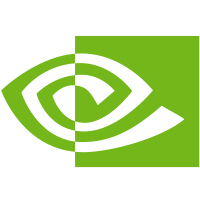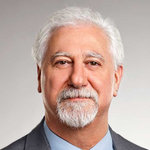
NVIDIA Corp
NASDAQ:NVDA


| US |

|
Johnson & Johnson
NYSE:JNJ
|
Pharmaceuticals
|
| US |

|
Berkshire Hathaway Inc
NYSE:BRK.A
|
Financial Services
|
| US |

|
Bank of America Corp
NYSE:BAC
|
Banking
|
| US |

|
Mastercard Inc
NYSE:MA
|
Technology
|
| US |

|
UnitedHealth Group Inc
NYSE:UNH
|
Health Care
|
| US |

|
Exxon Mobil Corp
NYSE:XOM
|
Energy
|
| US |

|
Pfizer Inc
NYSE:PFE
|
Pharmaceuticals
|
| US |

|
Palantir Technologies Inc
NYSE:PLTR
|
Technology
|
| US |

|
Nike Inc
NYSE:NKE
|
Textiles, Apparel & Luxury Goods
|
| US |

|
Visa Inc
NYSE:V
|
Technology
|
| CN |

|
Alibaba Group Holding Ltd
NYSE:BABA
|
Retail
|
| US |

|
3M Co
NYSE:MMM
|
Industrial Conglomerates
|
| US |

|
JPMorgan Chase & Co
NYSE:JPM
|
Banking
|
| US |

|
Coca-Cola Co
NYSE:KO
|
Beverages
|
| US |

|
Walmart Inc
NYSE:WMT
|
Retail
|
| US |

|
Verizon Communications Inc
NYSE:VZ
|
Telecommunication
|
Utilize notes to systematically review your investment decisions. By reflecting on past outcomes, you can discern effective strategies and identify those that underperformed. This continuous feedback loop enables you to adapt and refine your approach, optimizing for future success.
Each note serves as a learning point, offering insights into your decision-making processes. Over time, you'll accumulate a personalized database of knowledge, enhancing your ability to make informed decisions quickly and effectively.
With a comprehensive record of your investment history at your fingertips, you can compare current opportunities against past experiences. This not only bolsters your confidence but also ensures that each decision is grounded in a well-documented rationale.
Do you really want to delete this note?
This action cannot be undone.

| 52 Week Range |
47.5588
148.88
|
| Price Target |
|
We'll email you a reminder when the closing price reaches USD.
Choose the stock you wish to monitor with a price alert.

|
Johnson & Johnson
NYSE:JNJ
|
US |

|
Berkshire Hathaway Inc
NYSE:BRK.A
|
US |

|
Bank of America Corp
NYSE:BAC
|
US |

|
Mastercard Inc
NYSE:MA
|
US |

|
UnitedHealth Group Inc
NYSE:UNH
|
US |

|
Exxon Mobil Corp
NYSE:XOM
|
US |

|
Pfizer Inc
NYSE:PFE
|
US |

|
Palantir Technologies Inc
NYSE:PLTR
|
US |

|
Nike Inc
NYSE:NKE
|
US |

|
Visa Inc
NYSE:V
|
US |

|
Alibaba Group Holding Ltd
NYSE:BABA
|
CN |

|
3M Co
NYSE:MMM
|
US |

|
JPMorgan Chase & Co
NYSE:JPM
|
US |

|
Coca-Cola Co
NYSE:KO
|
US |

|
Walmart Inc
NYSE:WMT
|
US |

|
Verizon Communications Inc
NYSE:VZ
|
US |
This alert will be permanently deleted.
 NVIDIA Corp
NVIDIA Corp
NVIDIA Corp
Investor Relations
NVIDIA Corporation, founded in 1993 by Jensen Huang, Chris Malachowsky, and Curtis Priem, began its journey with a singular focus on graphics processing units (GPUs) for gaming. This venture coincided with the boom in demand for high-quality visuals, propelling the company to a prominent position in the tech industry. With gaming as its initial stronghold, NVIDIA’s GPUs quickly became the go-to choice for rendering stunning graphics, making the immersive experiences of modern video games possible. However, as technology advanced, so did NVIDIA's appetite for innovation, with the company diversifying its portfolio to apply its GPU technology to artificial intelligence (AI), data centers, and autonomous vehicles. This strategic pivot allowed NVIDIA to transform from a niche player in the gaming industry into a dominant force across multiple high-growth sectors.
Earning revenue primarily through selling its sophisticated GPU hardware and software solutions, NVIDIA capitalizes on several thriving markets. Its gaming segment continues to be a cash cow, fueled by a constant stream of enthusiasts and professionals alike who seek high-performance computing power. Meanwhile, in the data center and AI segments, NVIDIA sells its technology to cloud service providers, enterprises, and researchers eager to harness the power of AI and deep learning. These innovations demand powerful computation capabilities, which NVIDIA’s technology gracefully delivers. The company's reach extends to automation, where it partners with automobile manufacturers to integrate AI systems into vehicles, contributing to the nascent autonomous driving market. Through a blend of hardware prowess and forward-thinking software development, NVIDIA has positioned itself as more than just a graphics chip producer; it’s a versatile tech powerhouse that caters to the future of computing.

NVIDIA Corporation, founded in 1993 by Jensen Huang, Chris Malachowsky, and Curtis Priem, began its journey with a singular focus on graphics processing units (GPUs) for gaming. This venture coincided with the boom in demand for high-quality visuals, propelling the company to a prominent position in the tech industry. With gaming as its initial stronghold, NVIDIA’s GPUs quickly became the go-to choice for rendering stunning graphics, making the immersive experiences of modern video games possible. However, as technology advanced, so did NVIDIA's appetite for innovation, with the company diversifying its portfolio to apply its GPU technology to artificial intelligence (AI), data centers, and autonomous vehicles. This strategic pivot allowed NVIDIA to transform from a niche player in the gaming industry into a dominant force across multiple high-growth sectors.
Earning revenue primarily through selling its sophisticated GPU hardware and software solutions, NVIDIA capitalizes on several thriving markets. Its gaming segment continues to be a cash cow, fueled by a constant stream of enthusiasts and professionals alike who seek high-performance computing power. Meanwhile, in the data center and AI segments, NVIDIA sells its technology to cloud service providers, enterprises, and researchers eager to harness the power of AI and deep learning. These innovations demand powerful computation capabilities, which NVIDIA’s technology gracefully delivers. The company's reach extends to automation, where it partners with automobile manufacturers to integrate AI systems into vehicles, contributing to the nascent autonomous driving market. Through a blend of hardware prowess and forward-thinking software development, NVIDIA has positioned itself as more than just a graphics chip producer; it’s a versatile tech powerhouse that caters to the future of computing.
Earnings Calls
Management

Jen-Hsun (Jensen) Huang is a notable figure in the technology industry, primarily known as the co-founder, president, and CEO of NVIDIA Corporation, a leading company in graphics processing unit (GPU) technologies. Born on February 17, 1963, in Taipei, Taiwan, he moved to the United States at a young age. Huang attended Oregon State University, where he earned a bachelor's degree in electrical engineering. He later received his Master's degree in electrical engineering from Stanford University. Before founding NVIDIA, Huang worked at LSI Logic and Advanced Micro Devices (AMD), gaining significant experience in the semiconductor and computer industries. In 1993, Huang co-founded NVIDIA with Chris Malachowsky and Curtis Priem. Under his leadership, the company has become a dominant force in computer graphics, known for its cutting-edge GPUs that are widely used in gaming, professional visualization, data centers, and increasingly in artificial intelligence (AI) and machine learning applications. NVIDIA's technologies have also been pivotal in the development of self-driving cars and other high-performance computing applications. Huang is admired for his visionary leadership and innovative approach, steering NVIDIA through various technological evolutions. He has been instrumental in positioning NVIDIA at the forefront of AI and GPU advancements, significantly impacting industries beyond gaming, including healthcare, automotive, and manufacturing. His leadership style and strategic acumen have been recognized with numerous awards and honors, including being named one of the world's best CEOs by publications such as Harvard Business Review and Fortune. Huang is also known for his philanthropic efforts, primarily focusing on education and technology initiatives.

Huang attended Oregon State University, where he earned a bachelor's degree in electrical engineering. He later received his Master's degree in electrical engineering from Stanford University. Before founding NVIDIA, Huang worked at LSI Logic and Advanced Micro Devices (AMD), gaining significant experience in the semiconductor and computer industries.
In 1993, Huang co-founded NVIDIA with Chris Malachowsky and Curtis Priem. Under his leadership, the company has become a dominant force in computer graphics, known for its cutting-edge GPUs that are widely used in gaming, professional visualization, data centers, and increasingly in artificial intelligence (AI) and machine learning applications. NVIDIA's technologies have also been pivotal in the development of self-driving cars and other high-performance computing applications.
Huang is admired for his visionary leadership and innovative approach, steering NVIDIA through various technological evolutions. He has been instrumental in positioning NVIDIA at the forefront of AI and GPU advancements, significantly impacting industries beyond gaming, including healthcare, automotive, and manufacturing.
His leadership style and strategic acumen have been recognized with numerous awards and honors, including being named one of the world's best CEOs by publications such as Harvard Business Review and Fortune. Huang is also known for his philanthropic efforts, primarily focusing on education and technology initiatives.

Colette M. Kress is the Executive Vice President and Chief Financial Officer (CFO) of NVIDIA Corporation, a leading technology company known for its graphics processing units (GPUs) and advancements in areas like artificial intelligence and autonomous vehicles. Kress joined NVIDIA in 2013, bringing a wealth of experience in financial management and strategic planning. Before her time at NVIDIA, Kress held significant roles in prominent technology firms. She served as Senior Vice President and CFO of the Business Technology and Operations Finance organization at Cisco Systems, Inc. Her career also includes a tenure at Microsoft Corporation, where she was involved in finance for the Server and Tools division. Additionally, she has worked with Texas Instruments, further expanding her expertise in the tech sector. Kress is widely recognized for her financial acumen and leadership skills, contributing to NVIDIA's growth and success in the technology industry. She plays a crucial role in overseeing the company’s financial strategies, investor relations, and corporate development initiatives. Kress holds a Bachelor’s degree in Arts in Economics from the University of Arizona and an MBA from Southern Methodist University. Her strategic insights and financial stewardship have been instrumental in steering NVIDIA through its continued expansion and innovation.

Before her time at NVIDIA, Kress held significant roles in prominent technology firms. She served as Senior Vice President and CFO of the Business Technology and Operations Finance organization at Cisco Systems, Inc. Her career also includes a tenure at Microsoft Corporation, where she was involved in finance for the Server and Tools division. Additionally, she has worked with Texas Instruments, further expanding her expertise in the tech sector.
Kress is widely recognized for her financial acumen and leadership skills, contributing to NVIDIA's growth and success in the technology industry. She plays a crucial role in overseeing the company’s financial strategies, investor relations, and corporate development initiatives. Kress holds a Bachelor’s degree in Arts in Economics from the University of Arizona and an MBA from Southern Methodist University. Her strategic insights and financial stewardship have been instrumental in steering NVIDIA through its continued expansion and innovation.

Debora Shoquist serves as the Executive Vice President of Operations at NVIDIA Corporation. In her role, she is responsible for overseeing the company’s global operations, ensuring that NVIDIA's supply chain is robust and efficient to support the company's growth and technological advancements. Under her leadership, the operations team manages procurement, manufacturing, logistics, and quality assurance. Shoquist brings a wealth of experience from her previous roles in the technology industry, contributing significantly to NVIDIA’s infrastructure and operational strategies. Her leadership has been instrumental in supporting the company's innovation trajectory in the competitive tech landscape.


Timothy S. Teter is an accomplished legal professional who serves as the Executive Vice President, General Counsel, and Secretary at NVIDIA Corporation. He joined NVIDIA in 2017, bringing with him extensive experience in corporate law, governance, and intellectual property. Before joining NVIDIA, Teter had a successful legal career at the law firm Cooley LLP, where he was a partner in the litigation department. His practice focused on intellectual property and complex commercial litigation, providing legal strategy and defenses for high-profile technology companies. His work was particularly centered on patent law, making him well-suited for a leading role at NVIDIA, a company deeply involved in cutting-edge technology and innovation. At NVIDIA, Teter leads the company’s global legal matters, overseeing corporate governance, compliance, legal affairs, and intellectual property issues. His strategic leadership in navigating the complex legal landscapes of technology and innovation has been influential in NVIDIA’s growth and success. Teter holds a Juris Doctor degree from Stanford Law School and has a bachelor's degree in mechanical engineering from the University of California, Davis. His technical background in engineering, combined with his legal expertise, enables him to effectively manage and address the multifaceted legal challenges faced by a leading technology company like NVIDIA.

Before joining NVIDIA, Teter had a successful legal career at the law firm Cooley LLP, where he was a partner in the litigation department. His practice focused on intellectual property and complex commercial litigation, providing legal strategy and defenses for high-profile technology companies. His work was particularly centered on patent law, making him well-suited for a leading role at NVIDIA, a company deeply involved in cutting-edge technology and innovation.
At NVIDIA, Teter leads the company’s global legal matters, overseeing corporate governance, compliance, legal affairs, and intellectual property issues. His strategic leadership in navigating the complex legal landscapes of technology and innovation has been influential in NVIDIA’s growth and success.
Teter holds a Juris Doctor degree from Stanford Law School and has a bachelor's degree in mechanical engineering from the University of California, Davis. His technical background in engineering, combined with his legal expertise, enables him to effectively manage and address the multifaceted legal challenges faced by a leading technology company like NVIDIA.

Ajay K. Puri is a long-serving executive at NVIDIA Corporation, where he plays a significant role in the company's operations and business strategies. He has held various leadership positions within the company, contributing to its growth and technological advancements. Ajay Puri is known for his expertise in semiconductor and technology sectors, leveraging his extensive experience to drive NVIDIA’s initiatives in graphics processing units (GPUs) and artificial intelligence (AI). His leadership has been instrumental in expanding NVIDIA's influence across different markets, such as gaming, professional visualization, data centers, and automotive technology. Throughout his tenure, Puri has been recognized for his strategic vision and ability to foster innovation within the company. While specific details about his educational background and early career might not be widely publicized, his impact on NVIDIA's success and reputation as a tech leader is well-regarded in the industry.

Ajay Puri is known for his expertise in semiconductor and technology sectors, leveraging his extensive experience to drive NVIDIA’s initiatives in graphics processing units (GPUs) and artificial intelligence (AI). His leadership has been instrumental in expanding NVIDIA's influence across different markets, such as gaming, professional visualization, data centers, and automotive technology.
Throughout his tenure, Puri has been recognized for his strategic vision and ability to foster innovation within the company. While specific details about his educational background and early career might not be widely publicized, his impact on NVIDIA's success and reputation as a tech leader is well-regarded in the industry.

Chris A. Malachowsky is a prominent figure in the technology industry, best known as one of the co-founders of NVIDIA Corporation, which he helped establish in 1993. Malachowsky has played a vital role in shaping NVIDIA into a global leader in graphics processing technology. He co-founded the company alongside Jensen Huang and Curtis Priem, with the ambition of revolutionizing computing graphics and visualization. Malachowsky holds a Bachelor of Science degree in Electrical Engineering from the University of Florida and a Master of Science degree in Computer Science from Santa Clara University. Before founding NVIDIA, he worked at several notable companies such as Hewlett-Packard and Sun Microsystems, where he gained substantial experience and expertise in integrated-circuit design and computer graphics. Within NVIDIA, Malachowsky has held various roles and has been instrumental in driving the company's success through his contributions to engineering and technology development. Known for spearheading advancements in GPU architectures, he has significantly influenced the design and development of some of NVIDIA's most groundbreaking graphics technologies. In addition to his technical contributions, Chris Malachowsky is also recognized for his work in education and philanthropy. He is involved in initiatives that promote STEM education and research, further extending his impact beyond the immediate tech industry.

Malachowsky holds a Bachelor of Science degree in Electrical Engineering from the University of Florida and a Master of Science degree in Computer Science from Santa Clara University. Before founding NVIDIA, he worked at several notable companies such as Hewlett-Packard and Sun Microsystems, where he gained substantial experience and expertise in integrated-circuit design and computer graphics.
Within NVIDIA, Malachowsky has held various roles and has been instrumental in driving the company's success through his contributions to engineering and technology development. Known for spearheading advancements in GPU architectures, he has significantly influenced the design and development of some of NVIDIA's most groundbreaking graphics technologies.
In addition to his technical contributions, Chris Malachowsky is also recognized for his work in education and philanthropy. He is involved in initiatives that promote STEM education and research, further extending his impact beyond the immediate tech industry.
Donald F. Robertson Jr. is an accomplished legal and corporate governance professional, serving as the Chief Legal Officer and Secretary at NVIDIA Corporation. In his role, Robertson oversees NVIDIA's legal affairs, which encompasses corporate governance, intellectual property, litigation, compliance, and other legal matters critical to the company’s growth and innovation in the technology sector. His leadership and expertise support NVIDIA’s strategic initiatives and ensure adherence to legal and regulatory requirements in the rapidly evolving tech landscape. Robertson's experience and contributions have been integral in navigating complex legal challenges and fostering an environment of compliance and ethical business practices at NVIDIA.

Prof. William J. Dally is a renowned computer scientist and engineer, currently serving as the Chief Scientist and Senior Vice President of Research at NVIDIA Corporation. He is widely recognized for his contributions to computer architecture and parallel computing. Dr. Dally obtained his B.S. in Electrical Engineering from Virginia Tech in 1980, an M.S. from Stanford University in 1981, and a Ph.D. in Computer Science from the California Institute of Technology in 1986. Early in his career, he was involved with the development of high-speed interconnection networks and processing architectures. His work laid the foundation for subsequent advancements in the field of high-performance computing. Before joining NVIDIA, Dr. Dally held academic positions at prestigious institutions such as the Massachusetts Institute of Technology (MIT) and Stanford University. At Stanford, he was the Willard R. and Inez Kerr Bell Professor of Engineering and also served as the Chair of the Computer Science Department. At NVIDIA, Dr. Dally has been instrumental in advancing GPU computing and developing innovative technologies that leverage parallelism to improve computing efficiency and performance. His leadership in research and development has propelled NVIDIA to the forefront of artificial intelligence and graphics technology. In addition to his corporate role, Dr. Dally remains involved in academia, mentoring students and contributing to scholarly research. He has authored numerous publications and holds several patents in the areas of computer architecture and digital systems. Dr. Dally's contributions to the field have been recognized through various awards and honors, reflecting his impact on both theoretical advancements and practical applications in computing.

Dr. Dally obtained his B.S. in Electrical Engineering from Virginia Tech in 1980, an M.S. from Stanford University in 1981, and a Ph.D. in Computer Science from the California Institute of Technology in 1986. Early in his career, he was involved with the development of high-speed interconnection networks and processing architectures. His work laid the foundation for subsequent advancements in the field of high-performance computing.
Before joining NVIDIA, Dr. Dally held academic positions at prestigious institutions such as the Massachusetts Institute of Technology (MIT) and Stanford University. At Stanford, he was the Willard R. and Inez Kerr Bell Professor of Engineering and also served as the Chair of the Computer Science Department.
At NVIDIA, Dr. Dally has been instrumental in advancing GPU computing and developing innovative technologies that leverage parallelism to improve computing efficiency and performance. His leadership in research and development has propelled NVIDIA to the forefront of artificial intelligence and graphics technology.
In addition to his corporate role, Dr. Dally remains involved in academia, mentoring students and contributing to scholarly research. He has authored numerous publications and holds several patents in the areas of computer architecture and digital systems.
Dr. Dally's contributions to the field have been recognized through various awards and honors, reflecting his impact on both theoretical advancements and practical applications in computing.

Mylene Mangalindan is an executive at NVIDIA Corporation, a leading technology company known for its graphics processing units (GPUs) and innovative advancements in AI and computing. At NVIDIA, Mangalindan serves as the Head of Internal Communications, where she is responsible for developing and executing communication strategies that engage and inform employees across the organization. Her role involves crafting messages that align with the company's objectives, culture, and vision, ensuring that the internal audience is well-informed about key initiatives and developments. Mangalindan has a rich background in communications, with extensive experience in both corporate and media environments. Before joining NVIDIA, she held various communication roles and was associated with prominent media outlets, where she honed her skills in storytelling and strategic messaging. Her leadership at NVIDIA is characterized by a deep commitment to fostering transparent and effective communication, which is crucial in maintaining a cohesive and motivated workforce, especially in a rapidly evolving tech landscape. Mylene Mangalindan’s role is pivotal in facilitating the flow of information within NVIDIA, contributing to the company's continued innovation and success.

Mangalindan has a rich background in communications, with extensive experience in both corporate and media environments. Before joining NVIDIA, she held various communication roles and was associated with prominent media outlets, where she honed her skills in storytelling and strategic messaging.
Her leadership at NVIDIA is characterized by a deep commitment to fostering transparent and effective communication, which is crucial in maintaining a cohesive and motivated workforce, especially in a rapidly evolving tech landscape. Mylene Mangalindan’s role is pivotal in facilitating the flow of information within NVIDIA, contributing to the company's continued innovation and success.

Tommy Lee is a notable executive at NVIDIA Corporation, a leading company in the field of graphics processing units (GPUs) and AI technology. He currently serves in the capacity of Vice President, Embedded and Edge Computing. In his role, he is responsible for overseeing the strategic development and deployment of NVIDIA’s embedded systems and edge computing solutions, which are pivotal for applications in various industries including automotive, robotics, and IoT devices. Lee holds a significant background in technology and business management, having accumulated years of experience in driving innovation and leading high-performing teams. His leadership at NVIDIA is instrumental in expanding the company's computing platforms beyond PCs and data centers, bringing sophisticated AI capabilities to edge devices, which operate in application environments where low latency and high efficiency are critical. Throughout his career, Tommy Lee has been recognized for his contributions to advancing the integration of AI in everyday technology.

Lee holds a significant background in technology and business management, having accumulated years of experience in driving innovation and leading high-performing teams. His leadership at NVIDIA is instrumental in expanding the company's computing platforms beyond PCs and data centers, bringing sophisticated AI capabilities to edge devices, which operate in application environments where low latency and high efficiency are critical. Throughout his career, Tommy Lee has been recognized for his contributions to advancing the integration of AI in everyday technology.





























 You don't have any saved screeners yet
You don't have any saved screeners yet
